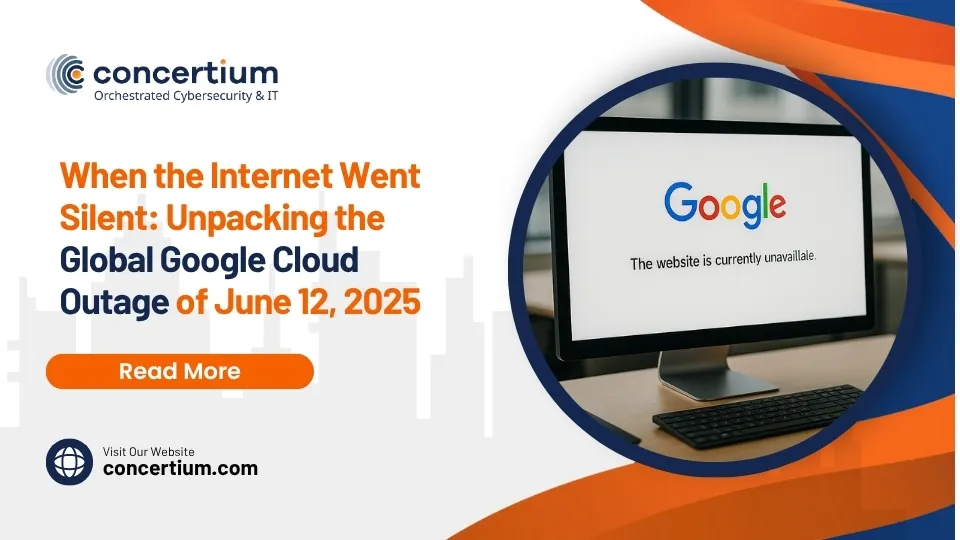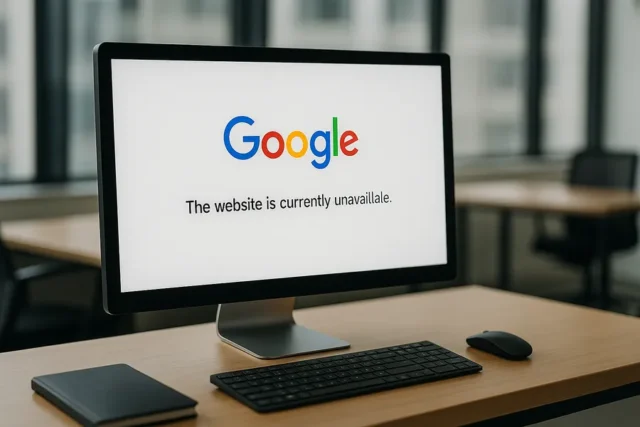On June 12, 2025, the internet experienced a rare but powerful disruption that rippled across the globe. A Google Cloud infrastructure issue unexpectedly halted access to some of the world’s most-used platforms, including Spotify, Discord, Cloudflare, Google Home, and countless other services. While the outage lasted only a few hours, it exposed just how vulnerable modern digital infrastructure has become—and how reliant we all are on a handful of cloud providers operating behind the scenes.
In this blog, we’ll walk through what really happened, what went wrong, and how businesses can learn from this high-profile failure to future-proof their digital operations.
The Collapse Begins: What Happened on June 12?
At approximately 1:51 PM Eastern Time, users around the world began reporting that popular apps and services were suddenly inaccessible. Spotify showed mysterious login errors. Google Home smart speakers stopped responding. Discord and Snapchat stopped loading for thousands. On tech monitoring sites like DownDetector, a sharp spike in outage reports confirmed that this wasn’t a minor glitch—it was a large-scale failure unfolding in real time.
Within minutes, companies started issuing statements. Cloudflare, one of the internet’s core content delivery and security providers, reported partial service degradation. Replit’s CEO posted on X (formerly Twitter) that their app was down due to an outage in Google Cloud, a revelation that quickly fueled speculation about the true source of the problem.
By mid-afternoon, it became clear that a wide variety of unrelated services all shared the same dependency: they were hosted on or powered by Google Cloud, specifically its Identity and Access Management (IAM) layer.
A Deeper Look at the Cause
The root cause of the disruption lay in a failure within Google’s IAM system. This authentication backbone is responsible for issuing secure digital credentials that allow users and systems to interact with cloud-hosted applications. When it failed, those credentials could no longer be validated. Without functioning tokens, users were effectively locked out.
This issue wasn’t isolated to Google’s services alone. Many third-party platforms that use Google Cloud’s IAM for backend operations also went down. This includes applications like Replit, platforms like Shopify, as well as backend processes tied to Cloudflare’s Workers KV database.
For users and IT professionals alike, the outage revealed just how much of the modern web is tied together by shared, often invisible, infrastructure. A small malfunction in one system—like IAM—can cascade and paralyze systems globally.
The Global Impact
The ripple effect of the outage was massive. Spotify alone recorded tens of thousands of service disruption reports within the first hour. Smart home systems such as Google Home and Nest also went dark, as they couldn’t authenticate with Google’s back-end services. Discord and Twitch, both major players in the online entertainment and gaming space, experienced severe connection errors.
Cloudflare, a key provider of network services, experienced direct impact when its storage tool, Workers KV, began failing due to its own dependency on Google Cloud. The company quickly acknowledged that the disruption wasn’t due to an internal bug but rather an external service failure, confirming Google as the likely culprit.
Meanwhile, developers and companies across the tech sector began scrambling for updates. System administrators were left blind as internal dashboards and tools couldn’t authenticate users or render data. Even companies that weren’t directly using Google Cloud were affected if their vendors were.
By late afternoon, Google issued a status update confirming the disruption and began restoring affected services. Full functionality wasn’t officially declared until several hours later, after validation checks ensured that token services and backend systems were stable.
Trust, Transparency, and the Role of Communication
One of the most interesting parts of the outage wasn’t just the technical failure—it was how companies responded. Google, initially silent, eventually confirmed the issue and promised a thorough post-mortem once all systems were restored. Cloudflare, in contrast, provided timely updates and pointed to the third-party nature of the problem, showing transparency without deflecting blame.
Replit’s CEO, Amjad Masad, used social media to keep users informed and to express frustration over the ripple effect of centralized cloud dependencies. These communications helped maintain trust during a chaotic time.
In an age where user trust can be won or lost in seconds, these gestures of transparency mattered. Users weren’t just looking for explanations—they wanted accountability, clarity, and a sense of control over the chaos.
Why This Outage Matters More Than You Think
This event underscored a reality that businesses—especially those in tech—must confront. The digital services we rely on are intricately connected, often through single points of failure. Many companies trust third-party infrastructure without fully understanding the scope of their dependencies.
A malfunction in IAM, which most people outside of IT have never heard of, brought down global platforms. That’s a sobering reminder that cloud services, while powerful and scalable, are not immune to outages—and that backup plans must be built with that reality in mind.
Furthermore, this outage serves as a reminder that service level agreements (SLAs), no matter how iron-clad they may seem, don’t always protect businesses from reputational harm or financial losses caused by upstream failures.
Lessons for Businesses and IT Leaders
While the dust has settled, the incident leaves behind valuable lessons for IT teams, decision-makers, and digital entrepreneurs.
First, it’s critical to design systems with redundancy in mind. Relying solely on one cloud provider—or one authentication system—makes your entire platform vulnerable to the same kind of outage that affected Spotify and Discord.
Second, proactive monitoring and third-party service awareness are essential. Outage maps and alerts from services like ThousandEyes or Pingdom can help teams identify external disruptions before they escalate internally.
Third, having a robust incident communication strategy is now a business imperative. Replit’s swift, public updates helped reduce user frustration. Cloudflare’s transparent acknowledgement built trust. Silence, on the other hand, can cause reputational damage.
Lastly, businesses must begin viewing resilience not just as a technical requirement, but as a competitive advantage. In a cloud-first world, resilience is the new uptime.
Moving Forward: What Google and Others Should Do
Google has since promised a full report on the outage and has already restored services. But a true step forward involves not just fixing what went wrong, but also publicly committing to transparency, architectural improvements, and ongoing reliability testing.
Companies like Google must help set new standards for communication and accountability in cloud computing. When a failure occurs, the speed and clarity of their response can be as important as the fix itself.
For smaller companies and startups, the lesson is equally clear: diversify infrastructure, create fallback systems, and have protocols in place for worst-case scenarios. Build with failure in mind—not because it’s likely, but because it’s inevitable.
Final Thoughts: Turning Outage into Opportunity
The June 12 outage may go down as a footnote in tech history, but it should be treated as a wake-up call. It proved that no matter how large or sophisticated a system may be, vulnerability is always a factor when everything is interconnected.
For those willing to adapt, this event presents an opportunity to reassess infrastructure, strengthen redundancy plans, and rethink what resilience really means in 2025 and beyond.
Rather than waiting for the next cloud hiccup, let’s treat this one as a catalyst—for smarter systems, better transparency, and a renewed commitment to digital responsibility.



